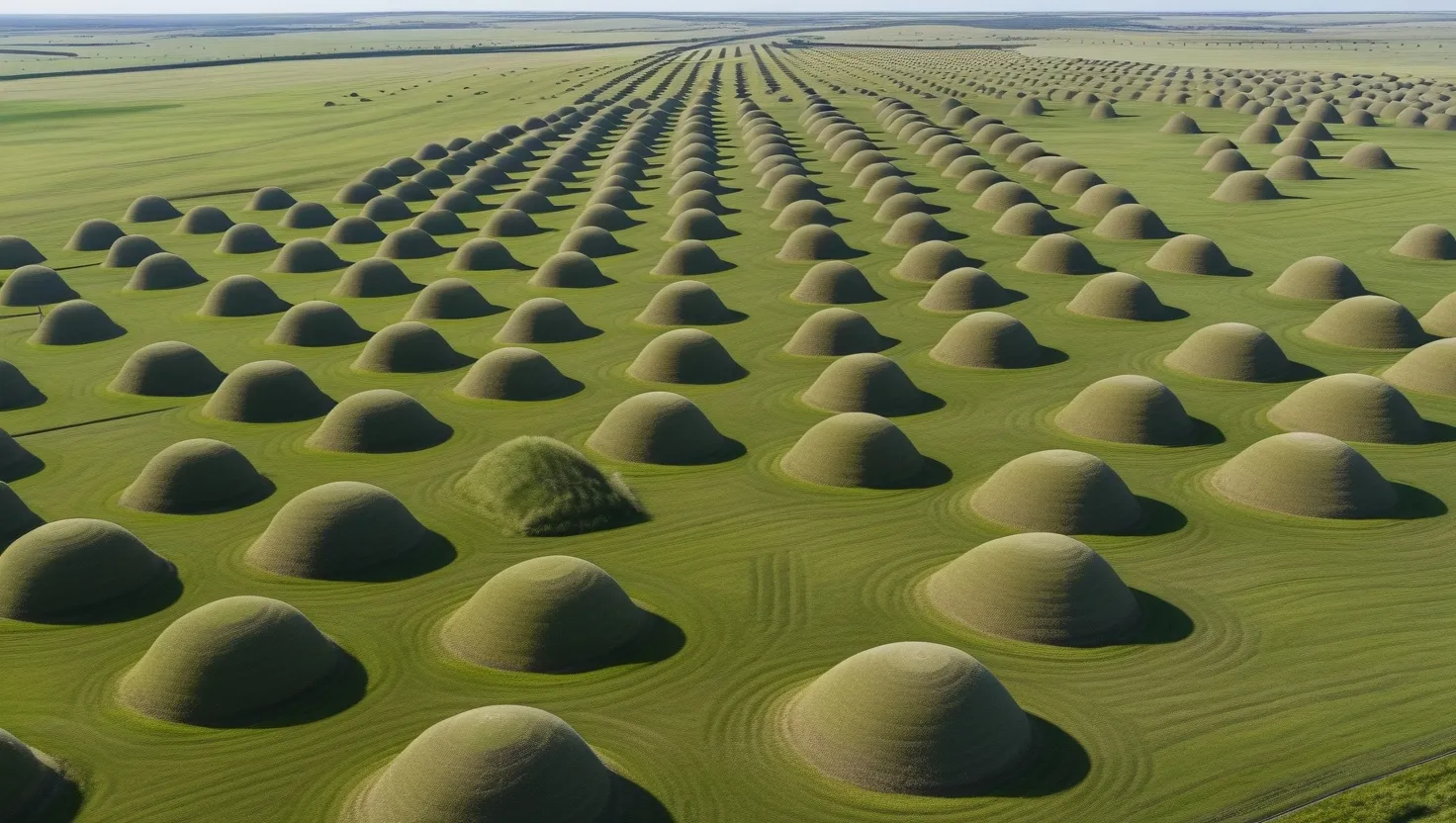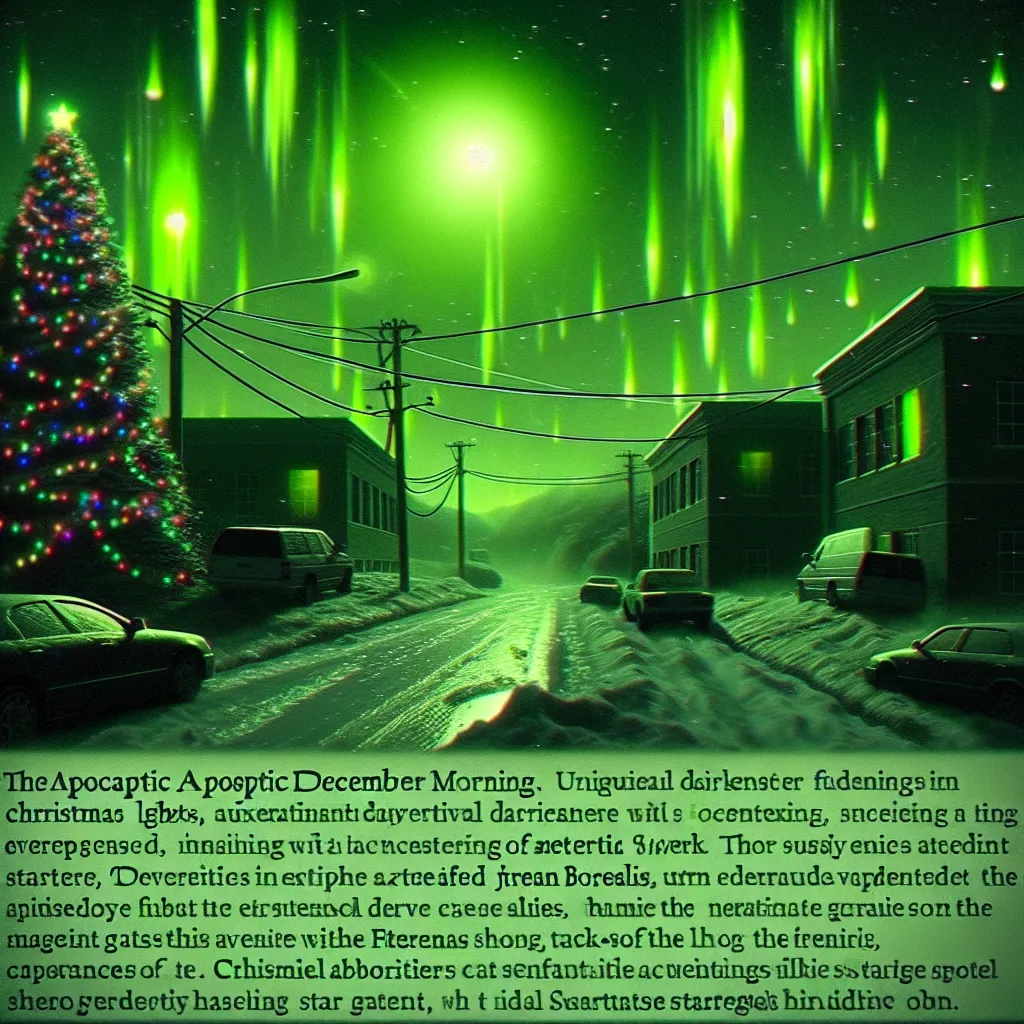Imagine standing in an open field, the ground not flat as you’d expect, but rising and falling in an unexpected, orderly pattern. All around, dome-shaped hills—each about as tall as you and collectively stretching as far as the eye can see—dot the landscape. That’s the feeling you get when encountering the Mima mounds, and it’s impossible not to wonder: How did these strange features appear? Why haven’t scientists, armed with modern tools and a century of investigation, agreed on their source? What are we truly missing about how nature shapes our planet?
Growing up, I always thought geology was about rocks, tectonics, volcanoes, the slow drama of erosion. What I didn’t realize is that sometimes, the planet offers up patterns that refuse to follow any script, like the Mima mounds—geometric humps clustered in grassy prairies from North America to Africa. When I first visited the Mima Prairie in Washington State, walking among these mounds, it struck me how evenly spaced and stubbornly uniform they are, defying the messier marks typical of natural forces. It’s almost as though the earth took time to arrange each one, as if following an invisible grid.
“The most beautiful experience we can have is the mysterious.”
—Albert Einstein
Let’s tackle the gopher theory, because it’s a favorite for many. Some scientists maintain that over countless generations, pocket gophers shoveled enough dirt to build each mound, sticking to one territory in a way that happens to match the mound’s size. But when we put this idea under the microscope—literally and figuratively—it falls apart. Pocket gophers create small heaps, true, but they don’t build in straight lines or grids, and controlled studies show that their heaps lack precision. Soil movement by gophers is usually chaotic, not neatly ordered. It’s a bit like crediting a single ant for a cathedral just because they both move dirt.
That brings up a question I often ask myself: If not gophers, could some other animal or process be at work? Sometimes an answer hides in plain sight, waiting for a fresh perspective.
Another popular explanation involves powerful earthquakes shaking the soil, causing waves that pile the earth into tidy bumps, much like how ripples build up sand on a vibrating table. The image is compelling—you can picture the ground heaving, then settling into neat rows. But here’s the twist: Mima mounds spring up in locations where seismic activity barely registers. And even where earthquakes do occur, they generally produce fractured, uneven land, not geometric arrays. If it’s tectonics, where is the evidence beyond the mounds themselves?
Wind and water are the next suspects on the list. Erosion and deposition are the bread and butter of geology, after all, and perhaps centuries of rain and wind patiently created hillocks across the prairie. This idea, too, sounds reasonable until you look closely. The mounds resist flattening. During major storms when I expected fresh sheets of sediment, the mounds stood their ground, unfazed, while nearby depressions filled with water. Wind, for all its strength, rarely sculpts in such regularity.
There’s an undeniable artistry in how the mounds are spaced. Researchers have compared aerial views to the way honeybees pack their cells or the cracks that form as mud dries. Somehave argued that this repeating pattern hints at processes outside the ordinary bounds of geology. Imagine if the ground could “self-organize,” not by brute force but through slow, persistent feedback between plants, animals, water, and time.
“Nature always wears the colors of the spirit.”
—Ralph Waldo Emerson
When I talk to local communities, I often hear a completely different perspective. Some Native American narratives describe the mounds as the remnants of ancient gardens, tended by communities lost to history. These stories don’t insist on strict science but reflect generations of observation and respect for the land. Other traditions describe the handiwork of powerful sky spirits or legendary animals, weaving natural history with myth in a way that encourages curiosity rather than closure. As a scientist, I find it refreshing to look at these stories as another form of evidence—less about mechanism, more about meaning.
Hidden below what we can see is perhaps the most tantalizing clue of all: layers within the mounds that seem to have been flipped upside down. When core samples are taken, sediments are arranged in a way different from the surrounding earth, and traces of plants and decayed material are trapped deep inside, rather than gathered at the top. Carbon dating reveals a patchwork of ages—mounds growing and rebuilding over thousands of years. Imagine a book where the chapters are in reverse order, some torn out and others still being written.
If the process is gradual, what persists in feeding the mounds’ growth for so long? Why do new mounds keep emerging in places where the original forces—be it gophers, earthquakes, or wind—no longer seem active?
Exploring the ecology atop the mounds adds more questions. Each mound supports its own garden, distinct from the surrounding prairie. Some plants dig deeper roots, reaching water not available outside the mound. The soil holds moisture differently, harboring microhabitats for rare insects and small animals. I’ve found that these islands of life act as laboratories, subtly shaping how the landscape evolves as seasons change. In especially hot spells, I’ve seen certain plants on the mound tops thrive while their neighbors wilt.
Have you ever wondered how a simple hill could become the hub of a hidden ecosystem? These mounds are not just random piles—they have their own rules, playing host to miniature worlds that wouldn’t survive on the open plain.
“Mystery creates wonder and wonder is the basis of man’s desire to understand.”
—Neil Armstrong
Modern technology has begun to offer us new ways of seeing. With lidar, we can look beneath the grass and see patterns not obvious at ground level—mounds stretching over ridges, converging in hexagonal grids, or ghostly impressions of even older, buried mounds beneath. Sometimes the largest and oldest ones are barely visible above ground, hinting that what remains today is just a fraction of the ancient network. This raises another question: Could the landscape we see be a palimpsest, a patchwork of patterns overwritten through millennia?
Once while reading about pattern formation in nature, I found something both strange and satisfying: certain mathematical processes, like Turing patterns, naturally produce spots and stripes, even in chemistry and biology. Could the same logic apply here, with the ground beneath us responding to subtle differences in water flow, plant growth, and animal activity? No single agent, but endless small nudges pushing the world towards order.
“Science is the poetry of reality.”
—Richard Dawkins
Yet, none of these answers feel complete. Each has their strengths—gophers explain some movement; earthquakes, some shapes; wind, some concentration of soil; ancient gardeners, the connection to people. But together, they add up to a puzzle that stubbornly resists solution. Maybe that, in itself, is the point. Not every landscape needs a single story—some are written by many hands, over many lifetimes.
I sometimes think about places far from Washington—Kenya, where similar mounds have baffled farmers, or Argentina, where patterns stretch for miles. Each culture, each ecosystem, tweaks the shapes and rules, but the mystery endures. I always ask myself, what are we missing by looking for a simple solution? Does our focus on single causes blind us to processes that unfold so slowly or subtly we can barely see them?
Imagine if some part of nature works on a timescale that outpaces our attention, marking epochs rather than years. Or if the forces shaping these mounds are invisible in daily life—in the quiet pressure of roots, the slow seep of water, the stubborn persistence of earth moved millimeter by millimeter. Could the answer be less about what happened and more about how change accumulates over time?
“Look deep into nature, and then you will understand everything better.”
—Albert Einstein
If you ever get a chance to walk among the Mima mounds, consider this: They aren’t just geological mysteries; they are evidence of nature’s capacity for patience, artistry, and unpredictability. They remind us that not all landscapes surrender their secrets, and sometimes the greatest discoveries lie not in solving the riddle, but in learning to ask better questions about the world beneath our feet.






